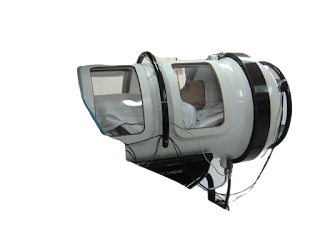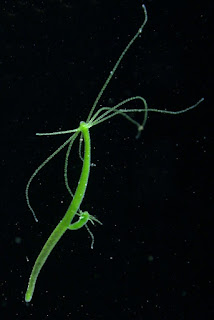Aging- a Symbolic presentationWhat are The 9 hallmarks of Aging?According to the scientific world there are 9 reasons behind Aging, they are generally known as 9 Hallmarks of Aging. They are Genomic instability, Telomeres Attrition, Epigenetic Alteration, Loss of...
Aging- a
Symbolic presentation
What are The 9 hallmarks of Aging?
According to the scientific world there are 9 reasons behind Aging, they are generally known as 9 Hallmarks of Aging. They are Genomic instability, Telomeres Attrition, Epigenetic Alteration, Loss of Proteostasis
Deregulated Nutrient Sensing, Mitochondrial Dysfunction, Cellular senescence, Stem cells Exhaustion and Altered inter cellular Communications.
genomic instability
Genome is the†genetical codes present in organisms. In other words genome is the complete set of DNA present in a cell. Every cell has† copy of the DNA. Genomic instability is the result of high frequency mutations ( sudden changes ) Because of† these mutations chromosome May rearranged, sometime the sequence of nucleic acids† or even the chromosome number May changed,( the chromosome number of human is 23 pairs, or 46 ).†
Telomeres attrition
Telomeres are the tail ends of chromosomes, which act as protective caps. I already explained about telomeres in my post " The telomere theory of Aging". Telomere Attrition or telomere shortening is one of† the four primary Hallmarks of ageing. After each cell division telomere become shorter and shorter. When Telomere is too short the cell cannot replicate anymore, this type of cells that cannot undergo cell division,these cells are known as senescence cells. Human body is capable of† producing an enzyme called telomerase, which can extend the the length of Telomeres but unfortunately the production of telomerase is limited, but cancer cells are producing sufficient amount of telomerase, so they are immortal.
Epigenetic alteration
Epigenetic alteration is the structural changes happens in DNA. These changes are due to adding and removing of mythyl (CH3) groups. Another reason for epigenetic alteration is the changes made to histones. Histones are a family of basic proteins that wrap around DNA strands. There are four types of histone,H2A,H2B,H3,and H4. Histones are positively charged and DNA is negatively charged, so histones neutralise† the charges in the DNA, In addition the† DNA become more tightly packed. When an epigenetic change that turn off a particular gene that associated with damaged DNA repair function, then an increased DNA damage will be the result.
Loss of proteostasis†
With increasing age, the quantity of mis folded proteins are increasing in our body, these proteins are useless and even toxic in nature. Normal proteins are in helical structure and soluble in water. With increasing age there will be a decrease in the synthesis of† protein in our body and at the same time an increase of misfolded proteins also noted, So body will face the deficiency of proteins in older age, the result is loss of muscle mass, weight loss, weakness and so on.
Deregulated nutrient-sensing
Nutrient sensing is the Cells ability to recognise and respond to nutrient such as glucose,lipids,fats, and other food particles. There are 4 pathways associated with nutrients sensing mechanism, they are mTOR pathway, Insulin and Insulin like growth factor (IGF-1),signaling pathway,†Sirtuins pathway and AMP kinase† pathway.
mTOR (mechanistic target of rapamycin) network sense hormone signals, nutrients, regulate metabolic activities etc. This network associated with many biological processes including immune responses, autophagy, functions of mitochondria etc. Insulin and Insulin like growth factor(IGF-1) signaling pathway has very important role in growth, metabolism and fertility. Insulin† is a hormone produced by Pancreas which helps liver cells to store glucose in the form of glycogen. Insulin like growth factor (IGF-1) produced in in many organs but primarily in liver, structurally it similar to Insulin. IGF-1 signaling promote growth of most of all tissues in our body. Unfortunately IGF-1 signaling reduced with aging. Sirtuins pathway involved in the regulation of fats and glucose metabolism, circadian rhythm, inflammation etc. Sirtuins are actually Enzymes.† † † † † † † † † † † † † † †AMPK pathway:†adenosine monophospate activated protein kinase ( AMPK) is an enzyme, where AMP( adenosine monophoshate) is also called as 5'-adenylic acid, and kinase is an enzyme. AMPK pathway sense the energy status of the body, and helps to produced etra energy when needed. AMPK produced energy by the oxidation of fatty acids and glucose present in our body ( especially in liver and muscles). In our body when ATP ( adenosine triphosphate) lost energy it converted to ADP. AMPK activated when ADP level is increased in the body.
Mitochondrial†dysfunctions
Mitochondria is known as the power house of a cell. This tiny organelles produced more than 90 percent of energy needed for our body. With aging mitochondrial failure can be observed, it cannot meet the energy requirements of the body. Mitochondria has it's own DNA, called mtDNA. According to the mitochondrial theory of aging ,when we age mitochondria produced less energy and more ROS ( reactive oxygen species) and other free radicals,these free radical and other external mutagens damaged the mtDNA The mytochondrial theory of aging says that "the rate of oxidative damage to mtDNA primarily determines lifespan"
Cellular senescence
With increasing age† there is an accumulation of† certain cells in our body, which are permanently lost their ability to divide, these cells are called senescence cells . Human cells can divided only 50 times, after that it reached the state of senescence. After each cell division the length of telomere shorter and shorter. When Telomere become very short the Cell division is not possible, this is the reason for cellular senescence. Senescent cells produced an inflammatory immunosuppressive, and some harmful chemicals. These chemicals entered the neighbouring cells through gap junction ( holes between two adjacent cell surfaces) later these adjacent cells are also become entered the state of senescence. If there is more senescent cells are present in an organ, it can't repaired.†
Stem cells exhaustion
Each organ and tissues in our body contains several stem cells which are being used to replaced old cells when they die. In addition Stem cells have many important functions, such as immune functions, blood production, and so on. The number of stem cells slowly decreased with aging, this is the reason that injuries in older people are† healing more slowly when compared with younger people. different types of stem cells are present in our body they are blood stem cells, neural stem cells, skin stem cells, epithelial stem cells, mesenchymal stem cells, etc.
Altered inter cellular communications
During aging communication between cells becomes more disturbed. cells communicate each other using chemical signals. These chemicals are basically proteins or other molecules. The chemicals used for communication are known as ligands. These chemicals messages are received by target cell using their specialised receptors, all the cells don't have such facilities. In a multicellular organism four types of chemical signaling are identified, they are paracrine signaling. ( communication between neighbouring cells), endocrine signaling ( communication between distant cells), autocrine ( cell signaling for itself,internal use) and signaling by direct contact ( signaling from one cell to adjacent cell). Here you may have a doubt , signals from brain and spinal chord are electrical impulses, where we can include it, no doubt synaptic signals are also included in paracrine category.
When neurotransmitters reached at the receiving cell the receptors received, and it caused chemical changes inside the cell. When we age chemical message used for cell communications tends to become more inflammatory. There are many factors behind this inflammatory behavior of the body, but senescence associated Secretary phenotype (SASP) is an important reason.
Conclusions
Out of the above mentioned 9 hallmarks of aging the first described 4 of them, the genomic instability, telomeric attrition, epigenetic alterations,and loss of proteostasis are said to be the primary cause of aging and the rest of them are the results of† these primary hallmarks. I am wondering to know that cancer cells are immortal, these are also human cells, but isolated from other cells,† because of DNA damage, they are able to resist apoptosis. Cancer cells produced excess telomerase, so telomere attrition not happen and they live longer, they not showing any hallmarks of aging. Why normanal cells are restricted to produce telomerase? This question is for you, find answer and let me know
Special request
Please suscribe to my blog, I don't know why nobody subscribing or even not making comments, friends If you do so that is my encouragement.
Cellinsight.online














